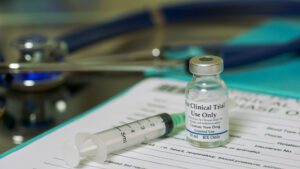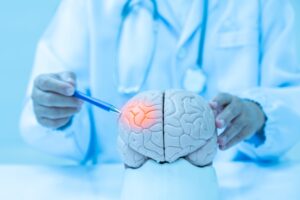Amyotrophic Lateral Sclerosis
What is amyotrophic lateral sclerosis (ALS) a.k.a. Lou Gehrig’s disease a.k.a. locked-in syndrome?
Amyotrophic lateral sclerosis (ALS) is a progressive, neurological disease that kills nerve cells in the brain stem, spinal cord and brain. Consequentially, muscles eventually weaken, causing loss of voluntary movement and control. ALS is typically fatal because patients lose the ability to breath since muscles in the chest are wasted away. ALS has two types: sporadic and familial, the former being the most common form at 90-95% of cases. Familial is considered to be inherited. ALS occurs in approximately 3.9 per 100,000 people in the United States. All races and ethnicities are affected, though ALS is more prevalent in white males aged 60-69. Men are affected more than women.What are the symptoms of amyotrophic lateral sclerosis?
ALS varies from patient to patient and symptoms show gradually. ALS symptoms may include the following (going from the start of the disease through its progression):- Difficulty with small movements such as holding objects like pens or pencils
- Difficulty doing everyday things such as walking
- Tripping/falling
- Arm/hand/leg weakness
- Difficulty speaking/swallowing
- Slowed or slurred speech
- Muscle twitching/Cramps
- Difficulty holding good posture
- Inability to move muscles gradually affecting the entire body (including blinking)
What causes amyotrophic lateral sclerosis?
The causes of ALS is unknown, while some genetic mutations have been discovered in those with familial ALS (approximately 5-10% of cases). Scientists also believe there could be a connection between frontotemporal dementia and ALS. Theories suggest that exposure to certain substances and toxins could be a factors in the development of ALS.How is amyotrophic lateral sclerosis diagnosed?
ALS symptoms are typically observed by a physician, then other tests are performed to rule out other conditions. Tests to inform ALs diagnosis are:- Electromyography (EMG): Detects muscle electrical activity
- Nerve Conduction Study (NCS): Assesses the nerve ability to send a signal
- Magnetic Resonance Imaging (MRI): Brain and spinal cord imaging
- Blood tests to eliminate other disorders or conditions
- Conditions that are often ruled out that mimic ALS symptoms are (among others):
- Multiple Sclerosis (MS)
- Lyme Disease
- HIV
- Human T-Cell Leukemia Virus
- West Nile Virus
- Post-polio Syndrome
What are the treatments for amyotrophic lateral sclerosis?
There is no cure for ALS but there are a few treatments, along with the support of friends and family members. Most of the treatment target symptoms, to relieve the patient, rather than the actual disease. These are:- Riluzole, which reduces damage to motor neurons
- Physical therapy
- Speech therapy
- Nutritional support
- Ventilation support
- Depression/anxiety medication
- Muscle relaxing and pain relieving medication
- Hospice care
Where can I find out more about amyotrophic lateral sclerosis?
Amyotrophic Lateral Sclerosis Articles

Scientists Find Potential Treatment Approach for FTD and ALS
Rose Duesterwald
April 11, 2024
Read More »

ICYMI: AIT-101 Earned Orphan Drug Designation in the EU for ALS in March 2024
Jessica Lynn
April 1, 2024
Read More »


ALS: Breakthrough from Northeastern University’s Pre-Clinical Study
Rose Duesterwald
February 22, 2024
Read More »

Prilenia Therapeutics Announces Data Supporting Initiation of Phase III ALS Study
Rose Duesterwald
February 13, 2024
Read More »


FDA Advisory Committee Votes Against Approving NurOwn for ALS
Jessica Lynn
September 29, 2023
Read More »

EMA Issues Negative Opinion on AMX003 to Treat Adults with Amyotrophic Lateral Sclerosis (ALS)
Rose Duesterwald
August 6, 2023
Read More »






